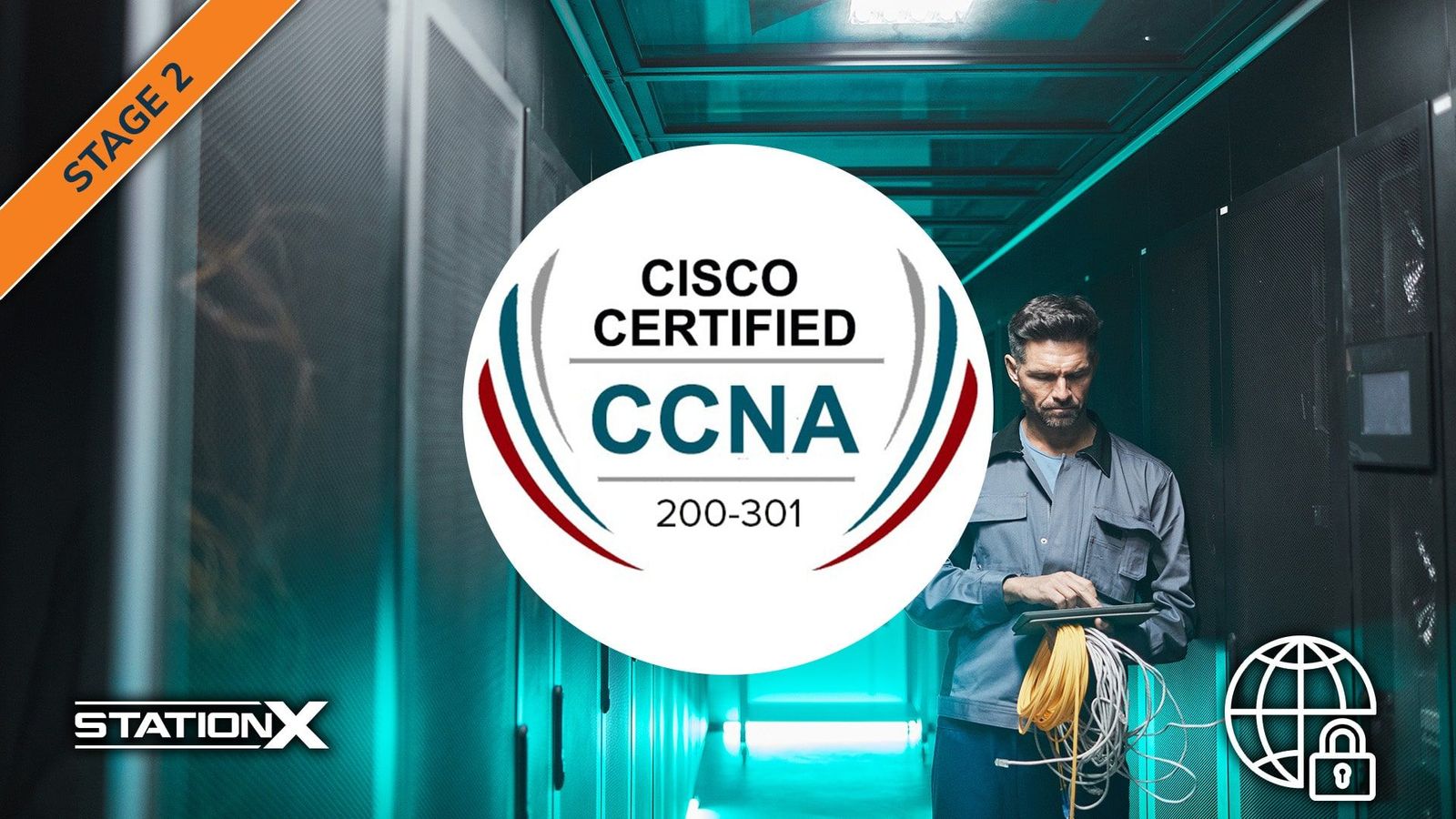CCNA Study: IPv6 Tutorial
Understand and configure IPv6 in real-world network environments. This course teaches the structure, addressing, and routing protocols of IPv6 to help you confidently work with next-gen IP networks and prepare for certifications like the CCNA.

What You’ll Learn
This CCNA Study: IPv6 Tutorial will teach you:
- IPv6 addressing:
Understand 128-bit address structure and format. - Routing with IPv6:
Configure RIPng, EIGRP, and OSPFv3. - Dual stacking:
Run IPv4 and IPv6 concurrently on routers. - Subnetting in IPv6:
Apply subnetting techniques with prefix lengths.
- Address types:
Identify unicast, multicast, and special addresses. - Transition methods:
Use 6to4, ISATAP, and NAT-PT strategies. - Real-world configuration:
Practice using Cisco Packet Tracer. - IPv6 vs. IPv4:
Compare versions and migration considerations.
Included in the IPv6 Tutorial
Suitable for the Following Careers
Course Content
Review of IPv4
Understanding IPv6
IPv6 configuration
IPv6 Routing Protocols
Transition Mechanism
Subnetting in IPv6
OPEN FULL CURRICULUM
Requirements
Description of CCNA Study: IPv6 Tutorial
This hands-on IPv6 tutorial dives deep into the protocol designed to replace IPv4. You’ll explore the 128-bit address structure, learn how to identify and configure different types of IPv6 addresses, and practice routing protocols in a virtual lab environment. Through video walkthroughs and labs, you’ll see how IPv6 improves scalability, routing, and future-proofing.
The course also teaches how to dual stack routers to handle IPv4 and IPv6 simultaneously, ensuring compatibility in transitional networks. With a strong focus on configuration, format, and prefixing, you’ll be well-prepared to handle IPv6 deployment and troubleshoot issues in a real network or exam environment.
- Understand the format and structure of an IPv6 address
- Configure RIPng, OSPFv3, and EIGRP for IPv6
- Apply subnetting and interpret prefix lengths
- Explore transition methods like ISATAP and 6to4
- Compare IPv4 and IPv6 with hands-on examples
- Reinforce knowledge with Packet Tracer labs
- Prepare for the IPv6 topics on the 200-301 CCNA exam
Whether you're new or already in the field, this IPv6 tutorial helps you truly understand and configure IPv6—from address formats to subnetting and routing. Developed by the IETF, IPv6 brings value to modern networks, and this course prepares you for CCNA and real-world implementation.
Who Is This Course For
Ideal for aspiring network professionals preparing for the CCNA 200-301 exam, IT students pursuing Computer Science degrees, and networking professionals seeking a solid foundation in IPv6 deployment and troubleshooting.
Course Instructor
Lazaro Diaz is a network engineer with extensive experience in the field and teaching. He holds certifications including CCNA, CCNA Security, CCNA Voice, CCNP, Security+, Network+, A+, MCP, MCTS, and MOS, and has passed the first CCIE exam. Lazaro has taught at institutions like Palm Beach Community College and New Horizons and provided private consulting.
Known for his unconventional and engaging teaching style, Lazaro has taught over 100,000 students worldwide through e-learning platforms and corporate training. His clients include MetroPCS (now T-Mobile), The Florida Marlins, and The Assurant Group.
Lazaro also teaches applications like Word, Excel, PowerPoint, and Access, including MOS certification. He focuses on simplifying complex topics and preparing students for certification exams and real-world job interviews. His interactive and dynamic classes make learning fun and practical, ensuring students are well-prepared for the job market.
Read More
Read Less
Testimonials

Jessica M.
This IPv6 tutorial was clear, hands-on, and packed with value. I now understand IPv6 address formatting, prefixing, and how to dual stack routers using both IPv4 and IPv6. The labs helped reinforce routing protocols like RIPng and OSPFv3. Highly recommended for anyone preparing for the 200-301 CCNA exam!

Daniel P.
The course helped me understand how the 128-bit IPv6 protocol version works and how to apply it in different network environments. I liked the subnetting and transition mechanism lessons. More hands-on labs would make it perfect, but overall, it’s a great starting point for learning IPv6.

Aria L.
I finally grasp the difference between IPv4 and IPv6 and how to use IPv6 addresses in real-world scenarios. The course broke down key concepts like the prefix, interface ID, and protocol functions in a way that made sense. It’s been a great help for my CCNA exam prep and boosted my understanding of both local and internet networking.
Show More
Show Less
 Lazaro Diaz
Lazaro Diaz


